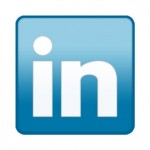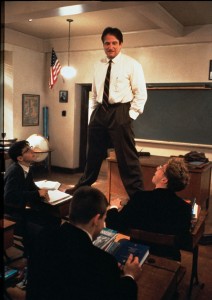If you’re a teacher, it can be hard to see the use of LinkedIn. It’s one more social network, which means one more set of emails connecting you with people that you barely talk with. Worse, it’s for professionals, so it won’t even have all the cute cats and strange pictures you get to see on Facebook. On the up side, you also won’t have to watch people break up. And besides, you already have a job. Even if you don’t, teaching jobs aren’t the kind of thing you’re going to find on LinkedIn this side of ever. Nonetheless, by the time you’ve finished reading, you’ll see the value of LinkedIn to teachers and academics.
So what is it, really? It’s a social network for professionals. Boasting 161 million members as of March 31st, 2012, its users include executives from every Fortune 500 company. It provides a digital space where people can build professional connections by uploading their résumés, answering user generated questions about things in their field, participating in discussions, and sharing events and updates in a timeline. LinkedIn also offers additional services to help people find jobs and map their networks, and offers account upgrades which will give users access to more information on other users for a fee. So what can it do for you?
Connect With Students

To start, LinkedIn is a safe environment where you can connect with students, without worrying about horror and wonder the glimpse of your private life of yak photography might inspire in them. If you feel cautious about Facebook and you’re not into Twitter, LinkedIn is a great platform to connect with them and have discussions. It can cope with you not using the newsfeed or participating in groups, because so much of it is devoted to archiving qualifications. However, if you dig out a few really good groups, you can direct connected students there. There are groups for all kinds of things, from ones devoted to alumni from various universities to ones devoted to nonprofit and local community groups, to various industries.
Connect with Professionals
Speaking of industries, it’s a great space to stay connected with people from business and industry that you meet at conferences or events. Odds are good that they have an account, and if you use yours well, you’ll be present to them in a way that’s more useful than email. Looking for an expert opinion, a guest lecture, or just someone to have a drink with because you’re in town for a conference? Being part of someone’s LinkedIn network is far superior to emailing them or calling them out of the blue, and helps you cultivate a relationship with them in a work context, which means you don’t have to see ten million photos of their favourite canoe. LinkedIn is all about building extended networks of weak relationships in order to give you the opportunity to turn them into stronger ones. I’ll talk about some ways of doing that next week.
Help Students
But back to students for a moment. Sure, you’re not looking for a job, but they are. Not all of them will go on to graduate school, and fewer still (some of us venture out into the world after our Master’s) will go on to be a professional academic in any sense. Most of them are looking for jobs, and one of the places they’re going to be looking (and one of the places the career centre of your institution is going to help them look) is LinkedIn. While a formal letter of reference from a professor or teacher doesn’t carry a lot of weight on paper, a recommendation on LinkedIn can tip the balance in a student’s favour. It’s in a language that hiring managers on LinkedIn understand, it’s public, and it’s clearly from you, rather than a letter the student trots out when it might be to their advantage. Also, giving a student an unsolicited recommendation can help you build a stronger relationship with them when they graduate. It also helps you keep track of what your students are doing after they finish, without also needing to see party pictures. But make sure your reference is original, it isn’t a place where the rubber stamp or mass mail works well. Be personal!
 It’s funny to say that, since I keep emphasizing the lack of various kinds of personal interaction that make LinkedIn different from Facebook, but it can be helpful in compartmentalizing your life. My rule is that if I’ve talked business with someone, I’ll connect with them on LinkedIn. If I’ve talked about life with them over food, then it’s time for Facebook. It’s not so much a different level of connection as it is a different kind, much like the relationship between teachers and students. The instructor in one of my TA workshops put it best, I think. “Be friendly with your students, but realize that you can’t be friends with your students.” LinkedIn isn’t for friends, though it can be for making them. It can give you the good kind of distance for relatively little opportunity cost.
It’s funny to say that, since I keep emphasizing the lack of various kinds of personal interaction that make LinkedIn different from Facebook, but it can be helpful in compartmentalizing your life. My rule is that if I’ve talked business with someone, I’ll connect with them on LinkedIn. If I’ve talked about life with them over food, then it’s time for Facebook. It’s not so much a different level of connection as it is a different kind, much like the relationship between teachers and students. The instructor in one of my TA workshops put it best, I think. “Be friendly with your students, but realize that you can’t be friends with your students.” LinkedIn isn’t for friends, though it can be for making them. It can give you the good kind of distance for relatively little opportunity cost.
So LinkedIn can help you guide and engage students outside the classroom; build industry, nonprofit, and business connections; and let you lend your weight to some of your students’ careers. The ease with which it does this is impressive. Once you’ve set up your profile, it doesn’t take that much time to check in now and again and write the odd reference. It’s a lot like a savings account. If you bank a little time into it every week, it starts to gather interest, and with that kind of capital, who knows what you could do?


